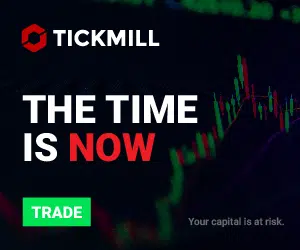-
Best Forex Brokers
Our top-rated Forex brokers
-
Islamic Account Brokers
Best accounts for Muslim traders
-
Brokers for Beginners
Start trading here
-
Forex Demo Accounts
Learn to trade with no risk
-
No-deposit Bonuses
Live trading with no deposit
-
ECN Brokers
Trade with Direct Market Access
-
Lowest Spread Brokers
Raw spreads & low commissions
-
High Leverage Brokers
Extend your buying power
-
Market Maker Brokers
Fixed spreads & instant execution
-
MetaTrader 4 Brokers
Top MT4 brokers in Malaysia
-
MetaTrader 5 Brokers
Top MT5 brokers in Malaysia
-
TradingView Brokers
Top TradingView brokers
-
cTrader Brokers
Top cTrader brokers in Malaysia
-
Forex Trading Apps
Trade on the go from your phone
-
Copytrading Brokers
Copy professional traders
-
All Trading Platforms
Find a platform that works for you
An order a trade on the Forex market. An order is an instruction from trader to broker that details the way traders want to enter or exit a position in the market. There are many different Forex order types available for entering into a position, that we are going to cover in this article. But, depending on your trading style, you might be using only those order types that suit best to your trading style.
Here are the Forex order types that are offered by most brokers, and how/when it’s best to use each of them.
Market Order
A Market Order is a customer order for immediate execution at the best price available. Most of the time when you place a market order it will be executed at the current market price, however, during news events or other times of rapid changes in the market, the trade will be executed at the best available price. During this high volatility period, entering into a trade might result in you getting a worse price than the current market price, and thus your order might be filed with significant slippage.
The main advantage of a market order is that no matter what the market conditions are, your order will always get filled even if that means partial fills. This type of order guarantees that the order will be executed.
Buy Stop Order
A Buy Stop Order is an order that will execute your trade when the price is above the current market price. For example, the EUR/USD is currently trading at 1.0550, and you want to buy at 1.0600. For these type of trades, you’ll use a buy stop order. Buy stops tend to be popular orders to use when trying to buy above resistance levels. So, in this case, the resistance level was above 1.0590, and if someone wants to get in at 1.0600, they could this order type.
Buy Limit Order
A Buy Limit Order is an entry buy order that files a trade when the current market price is above the price the trader would like to buy it for. For example, if the EUR/USD is currently trading at 1.0425 and someone wants to buy on a dip or retracement to 1.0385. For this type of trade, you’ll use a buy limit order. If the price level of the EUR/USD was currently in a channel and someone is going to buy at the support level, you’ll use a buy limit order so when it hits that support level at 1.0385 your order will be triggered with the hope that EUR/USD will bounce off this support. A limit order is only filed at the specified price and in this regard, there is a risk of not getting a fill if there is not enough liquidity at the limit price.
Sell Stop Order
A Sell Stop Order is an entry sell order to get in the market when the price is below the current market price. For example, if the EUR/USD is currently trading at 1.0625 and you want to sell at 1.0575, then you would use a sell stop order. Just like with the buy order, you’re trying to enter the market if the price breaks support. A sell stop is good to use here if your support level is 1.0585 and you want to get in below that. In this case, you will enter a sell stop at 1.0575.
Sell Limit Order
A Sell Limit Order is an entry sell order when the current market price is below the price you would like to sell. For example, the EUR/USD is currently trading at 1.0500, and you want to sell at 1.0550. For this type of trade, you’ll use a sell limit order. A sell limit is a great order to use if you want to sell at resistance in anticipation of a reversal of the trend.
Stop-Loss Order
A Stop-Loss Order is designed to prevent additional losses if the market goes against your position. This is the most important order type of all because your risk management strategy will determine your stop loss level.
Take-Profit Order
A Take-Profit Order is an order designed to lock in a profit for an existing position once the exchange rate moves in a favourable direction and hits the specified threshold. This type of order is advantageous to lock-in profits when you’re unavailable to monitor your trades.
Trailing Stop Order
A Trailing Stop Order is a flexible order that can help you automatically manage your fixed stop loss. A Trailing Stop Order is effective in managing risk and optimising profits. As an example, if your trade has already moved in your favour and if you want to tighten your stop loss, you can do that by using a trailing stop order.
Stay updated
This form has double opt in enabled. You will need to confirm your email address before being added to the list.




























